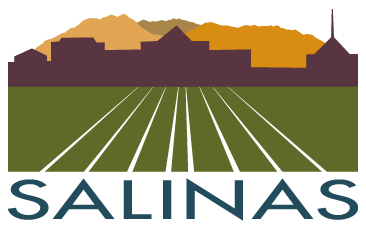Library History
In 1906, a public-spirited Salinas Civic Club resolved to build a public library building for Salinas. With tireless effort and the help of Salinas residents, these ladies raised the necessary funds to purchase a lot and secure $10,000 from Andrew Carnegie for a building. Before long, the Odd Fellows of Salinas added the books from their library to those from the Woman’s Christian Temperance Union Reading Room. The I.O.O.F. then hired Carrie Miller Striening to classify them.
On November 4, 1909, Mrs. Striening proudly opened the doors to the new Salinas Public Library Carnegie building. Before the close of century, the system built another main library and two smaller ones; formed an internationally known Steinbeck Collection; organized a volunteer-run homebound service; built one of the most successful literacy programs in the state; started a Chicano Resource Center; and in general served the population of a rapidly growing city.
Ironically, the beginning of twenty-first century almost brought an end to the public library in Salinas when a serious budget crisis prompted the city council to plan closure of the entire system early in 2005. Once again the people, businesses, and organizations of Salinas and beyond came forward to affirm the value of their public library. In about three months, the Rally Salinas! campaign raised enough money to keep the system open 33 hours a week for one year. Then on November 8, 2005, the citizens of Salinas voted a sales tax to keep the library and other city services funded for the next ten years. This tax was extended in 2016 through a subsequent tax Measure E which ensures ongoing funding.
In July 2018, Salinas Public Library opened a satellite library location called Library Connection at the Northridge Mall as at temporary library for the North Salinas community while the El Gabilan Library is closed for reconstruction. From October 2018 thru January 2019, the Library added various self-service options such as self-checkout kiosk, online payment, and self-service holds, to improve service to the community. On February 22, 2020, the newly reconstructed El Gabilan Library opened to the public. The new 20,000 sqft. library building will more than triple the collection capacity with more technology available for the community. It will also feature a community meeting room, makerspace, computer studio, multiple study rooms, and an outdoor backyard space with drought-tolerant plants and interactive elements for children.
SALINAS PUBLIC LIBRARY SYSTEM HIGHLIGHTS
Material in the Local History Collection at the John Steinbeck Library was used to prepare this history.
Highlights 1900 - 1949
1906
The Trustees of the Salinas City Library agree to accept the books from the library of the Salinas WCTU (Woman’s Christian Temperance Union) and look for a suitable room. Meanwhile, the women of the Salinas Civic Club, later the Salinas Woman’s Club, vote to work for a public library building.
1907-1909
In February of 1907, the Salinas City Council pledges to support the Civic Club’s efforts. Philanthropist Andrew Carnegie promises the $10,000 in April. By December 1907 the Club is ready to place $2,200 down for the $4,000 Coulter lot on the southeast corner of Main and San Luis Streets. The slough on the property is promptly filled and the ground graded. More money is raised through donations and special events such as “skating parties, musicales, baseball games, lectures, concerts, theater parties, balls, dances, tag days, teas,” etc. San Jose architect Jacob Lentzen prepares plans and the specifications for the Classical Revival style building. On November 4, 1909 Carrie Miller Striening who works for the system until 1936, opens the Carnegie library building to the public at 2:00 in the afternoon.
1931
Miss Amanda Anderson of Cody Wyoming is hired as librarian while Miss Striening continues as assistant. By now there are over 10,000 citizens in Salinas.
1940
Artist Lester Boronda, of the pioneer Boronda family donates a collection of his paintings to the library in memory of his father, Sylvano Boronda.
1944
The Salinas Public Library hires Pauline Pearson, who will later be recognized for her research on John Steinbeck in Salinas.
Highlights 1950 - 1969
1951
A large room in the city Recreation Center (the old USO building) is remodeled for use as the children’s library.
1952
A remodel of the Carnegie building begins in March. Miss Amanda Anderson resigns as of December 1, 1952 and Mrs. Barbara Miller is appointed acting librarian. The North Salinas “book station” opens at the firehouse on Laurel, but will move to 1262 North Main two years later. Howard Samuelson is appointed the new library director for the town of 18,319.
1957-1959
The Salinas Californian of March 7, 1957 details the inadequacies of the old Carnegie library building on Main Street, and the city council plans for a new $220,000 library building. John Ward becomes library director, and in 1959 the city breaks ground for the new library on the corner of Lincoln and San Luis Streets, just a few blocks from the old library. It is the second unit of the City’s civic center.
1960
The library on Main Street closes its doors for the last time, setting a new circulation record. The new building is scheduled to open March 21, 1960 in this city of 28,957. The new building is dedicated April 3, 1960. The Carnegie Building is razed during August. In November the original cornerstone from the Carnegie Library is set near the San Luis Street entrance of the building as a testament to “those who had the courage and the foresight over 50 years ago to build the first library in Salinas.” –Salinas Californian.
1962
In October Salinas born author John Steinbeck is announced the winner of the Nobel Prize for Literature. A month later the library lounge area is named the “John Steinbeck Room.” Steinbeck responds favorably to the honor by writing to say he “browsed” the library “practically to its roots in his youth.” The Salinas Californian records a high patron demand at the library for books of the Salinas born author.
1964
After annexation of the Alisal in 1963, the city takes over the county library branch housed in the garage on Alma Street, and Salinas is now a town of 51,700. In June John Gross becomes Library Director. Later in the year Jack Patton, a retired Salinas Californian editor, donates his Steinbeck first editions, effectively beginning the Steinbeck Archives.
1966
The new El Gabilan Library on North Main Street opens on October 3, 1966. Mrs. Elena Christensen, who donates part of the cost of her property, is later recognized for her contribution with a plaque.
1969
The city council renames the Lincoln Avenue library building in honor of the late John Steinbeck. Salinas now has 58,500 people.
Highlights 1970 - 1989
1973
A major East Salinas branch library is proposed in February while in May the John Steinbeck Library opens its newly constructed wing, which adds 30,000 square feet. The Soroptimists purchase the Tom Fitzwater statue of John Steinbeck, which has been on display at the library since December of 1971, and donate it to the library.
1974
In April the “Basement” for young adults opens in the lower level of the new annex and the Steinbeck statue is placed on library grounds.
1975-1976
Library Director John Gross requests money to buy Steinbeck manuscripts and memorabilia. The Library Volunteer Program is initiated, and outreach to the homebound begins. After the annexation of Santa Rita in 1975, the population reaches 71,630.
1977
The Steinbeck Foundation is formed on Steinbeck’s birthday, and on November 6th the Steinbeck Room opens to display material from the expanding Steinbeck Archives.
1978
A new library friends group, Friends of the Salinas Public Library, also known as FOSPL, is formed. The group will prove an important library partner, raising money for the library, and working to pass tax measures to fund the library. The new Santa Lucia Library opens, replacing the store front location on Market Street.
1980
The first Steinbeck Festival is held. The Friends of the Salinas Public Library open the Steinbeck Boutique at the John Steinbeck Library to help purchase The Pearl manuscript. Many area residents and organizations finally buy The Pearl Manuscript for the Steinbeck Archives, “piece by piece.”
1982
Gordon Joblin of the Friends of the Salinas Public Library persuades MGM to hold the Cannery Row movie premiere in Salinas, on January 29th. Actress Debra Winger (Suzy) is photographed kissing the Steinbeck statue. Mayor Barnes proclaims Salinas the “capital of Steinbeck Country.” The population figure for Salinas is 82,633.
1983
The Salinas Public Library Steinbeck Archives Collection receives recognition in American Studies International Newsletter, along with Steinbeck Collections at Stanford and the Pierpont Morgan Library. Salinas’s population is recorded as 84,485.
1984
The Salinas Public Library is one of the 27 public libraries in California to receive seed money from the California Literacy Campaign. One of the most successful literacy programs in the state is underway.
1989
The John Steinbeck Library is closed for repairs to damage from the Loma Prieta Earthquake in October.
Highlights 1990 - 1999
1991
Julia Orozco appointed Library Director. The population of Salinas is over 100,000.
1992
Santa Lucia Library dedicates the Chicano Cultural Resource Center, thanks to the tireless efforts of senior librarian Patricia Oliverez.
1993
In January all three libraries close Thursday evenings due to budge constraints. The Young Families in Our Libraries, a teen parenting family literacy project, is developed. The Program, designed by Maria Elizabeth M. Roddy, will become the model for such programs throughout the state of California. September 11 the Santa Lucia Library is renamed in honor of labor leader Cesar Chavez. Members of the United Farm Workers Union, Chavez’s widow and several of his children attend the ceremony.
1996
The Friends of the Library hold a book sale on the lawn of the El Gabilan Library. Thanks to a donation from the Salinas Rotary Club, the Cesar Chavez Homework Center opens its doors to students in October.
1998
The Steinbeck Archives move to the newly built National Steinbeck Center Museum at 1 Main Street in Salinas. Another major goal is successfully accomplished.
1999
Slithers, the beloved library snake dies. Librarians estimate his stay at the library was about ten years.
Highlights 2000 - Present
2000
Using money donated by the Gates Foundation and the California State Library, as well as money from the library budget, public Internet access arrives. In July the library orientation for the public begins. Population in Salinas is officially 151,060.
2003
John Steinbeck Library Homework Center opens.
2004
Budget difficulties close the three libraries on Mondays. On November 4, 2004, tax Measures A, B, C fail; and the Salinas City Council votes to close the library system between January and June of 2004.
2005
In January the Salinas High School’s Health Occupation Students Association start selling bracelets to raise money for the library and recreation centers. On January 18 residents and employees hold a candlelight vigil to protest closure. January 19th the American Library Association passes a resolution opposing the closure of the Salinas Public Library System. After talking to residents and local organizations, Mayor Anna Caballero unveils her Rally Salinas! Plan on February 4th. The Mayor calls for Salinas to raise $500,000 and keep the Salinas Public Library System open reduced hours. The proposed closure attracts worldwide attention. Residents and former residents write letters, make phone calls, send money, and remember the library in their wills. Local organizations and businesses donate money. Actor Bill Murray gives his $12,500 golf winnings at Pebble Beach to the Rally Salinas Fund. Students write letters and hold marches. In February a library delegation with the American Library Association president and the California State Librarian meet with the mayor and attend an open meeting of the Save Salinas Libraries, a group of 150 residents. On March 2nd the Salinas City Council votes to keep each branch open two days a week if $500,000 is raised. In April authors and activists hold a 24-hour read-in at the Cesar Chavez Library. By April 7th the $500,000 is raised and the three libraries will be open on a minimum schedule. On April 21, 2005 Maizy the corn snake, successor to the notoriously bashful Salinas Rose, is given to a third grade class at a local school. The paper notes that the Salinas Public Library has owned a snake for 21 years. At the end of April, Toronto’s St. Michael’s Choir gives two performances to raise money for Rally Salinas! With a projected budget of $650,000 from Rally Salinas! the Salinas City Council approves longer hours. The system opens 33 hours per week. On November 9, 2005 Measure V passes with more than 60% of voters agreeing to a halfcent sales tax for the next ten years.
2006
The Renaissance of the Salinas Public Library System begins in this city of 145,032.

 Facebook
Facebook Twitter
Twitter Instagram
Instagram Youtube
Youtube